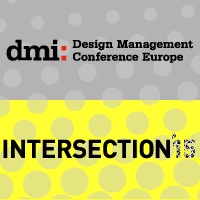What is Strategic Enterprise Design?
Design and creative disciplines are challenged to deliver value to organisations, clients and businesses while making an impact on people's lives and experiences. This means transforming the way businesses work, and realigning the various moving parts of enterprises: ambitious endeavours transforming entire ecosystems.
The complex and volatile nature of such ecosystems quickly becomes overwhelming, with brands, processes, culture, technology or touchpoints being just tiny parts of the puzzle. Looking at them in isolation leads to enterprise awkwardness, the frustrating experiences we have with many brands and organisations we deal with in our lives.
Strategic Enterprise Design is an emerging practice of design that tackles challenges at the level of enterprises, applying a strategic approach looking to reshape enterprise-people relationships. Introduced in Milan Guenther's 2012 book INTERSECTION, an enterprise design approach extends the scope to concerns outside the classic realm of design, looking at every aspect important to a given challenge.
Appreciating the diversity of stakeholders and navigating a set of intertwingled concerns, it integrates different subfields of design into a coherent whole, making them mere perspectives on a shared problem space. It leverages universal traits of design thinking and practice such as modelling, iterative prototyping and open-ended inquiry, to generate options for a desired future state which informs strategic decision-making. Spanning the space from Brand Identity and Culture, Experience Design and Enterprise Architecture to tangible creation and delivery, Enterprise Design bridges gaps and aligns towards a common course.
Liberating design from pre-determined results and constrained subfields, Strategic Enterprise Design bridges the gaps to deliver and maximise impact.
What is Design Management?
Design Management as defined by the Design Management Institute (DMI) encompasses the ongoing processes, business decisions, and strategies that enable innovation and create effectively-designed products, services, organisations, communications, environments, systems and brands that enhance our quality of life and provide organizational success.
On a deeper level, Design Management seeks to link design, innovation, technology, management and customers to provide competitive advantage across the triple bottom line: economic, social/cultural, and environmental factors. It is the art and science of empowering design to enhance collaboration and synergy between "design" and "business" to improve design effectiveness.
The scope of design management ranges from the tactical management of corporate design functions and design agencies, including design operations, staff, methods and processes—to the strategic advocacy of design across the organization as a key differentiator and driver of organizational success. It includes the use of design thinking—or using design processes to solve general business problems.
Some examples of professionals that are practicing design management include design department managers, brand managers, creative directors, design directors, heads of design, design strategists, and design researchers, as well as managers and executives responsible for making decisions about how design is used in the organization.
A number of leading international educational institutions have established design management as a respected course of study and research. As leading practitioners of design management and design leadership, DMI members are actively engaged in design thinking and managing industrial design, graphic design, service design, environment design, brand identity, fashion design, interface design, interior design, experience design, architecture and engineering. They work for corporations, design agencies, educational institutions, and government.
